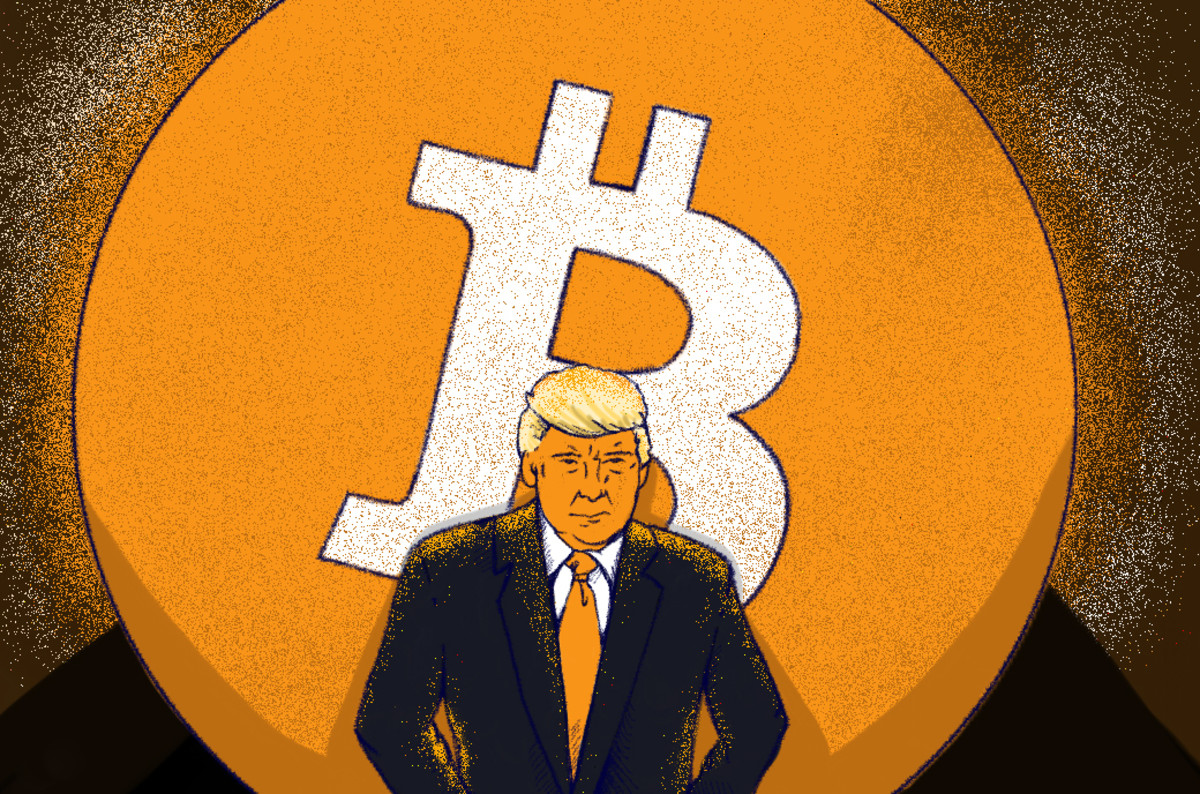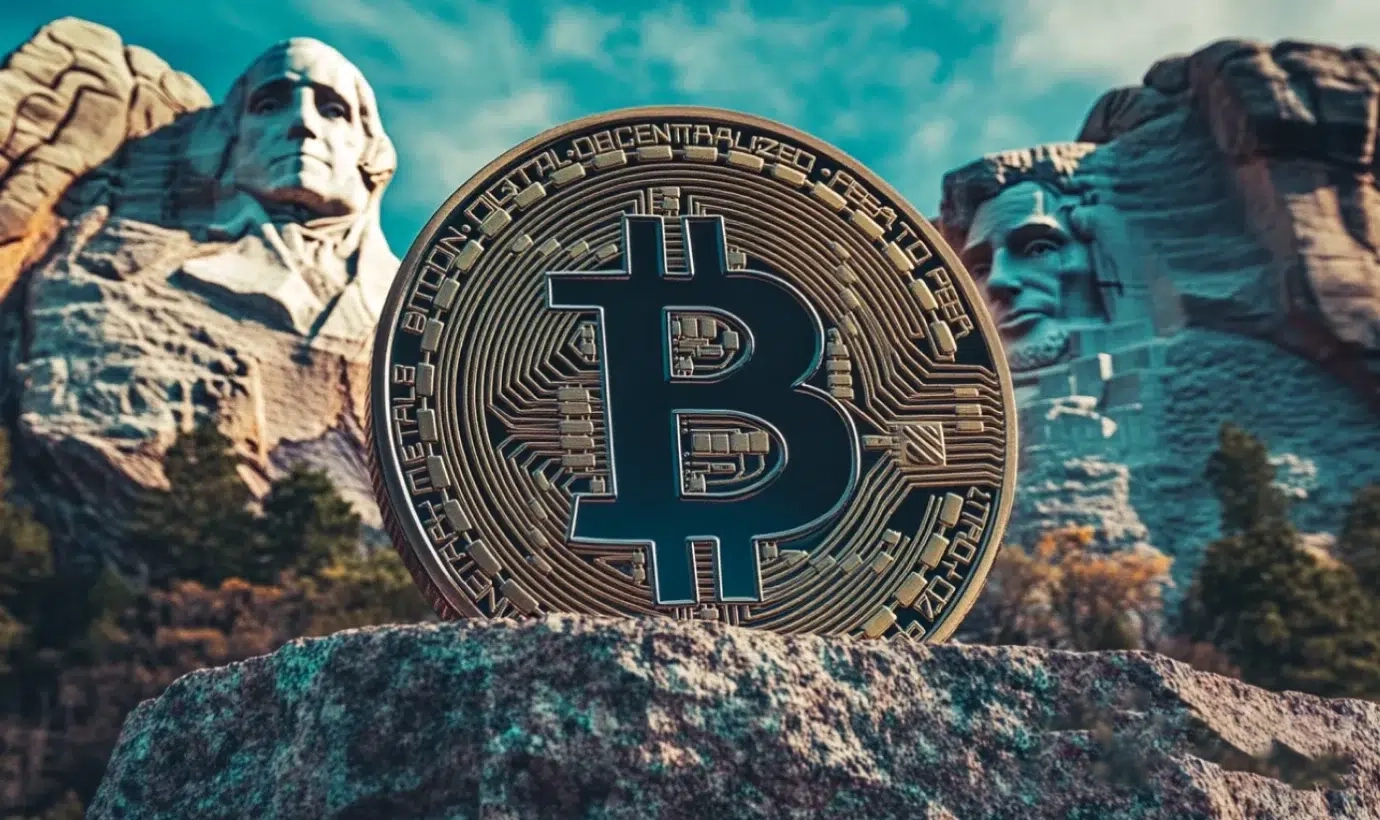
The winds of change are blowing through the crypto world, led by Donald Trump’s audacious promises. How will these declarations impact Bitcoin’s potential rise to $250,000?
With bold proposals and fiery rhetoric, Trump’s term kicks off with a focus on crypto. From strategic reserves to mining, here’s what’s at stake for Bitcoin and beyond.
Trump Triumphs
With a dramatic entrance, Donald Trump has reclaimed the White House, marking his triumph as the 47th president of the United States. His return was celebrated amid glitter and glamour at Mar-a-Lago, featuring guests like Elon Musk. This victory has sparked excitement among crypto enthusiasts, propelling Bitcoin past $75,000—a new all-time high. This time, Trump’s commitment to the crypto world seems unwavering, emphasizing his support to shape policies favorable to this digital frontier.
Trump’s Promises to the Crypto Industry
One of Trump’s most ambitious proposals is the vision for a ‘strategic national crypto stockpile.’ His logic is simple: instead of auctioning seized Bitcoin, store it as a strategic national asset. Just like gold or oil, Trump suggests Bitcoin could be a crucial reserve for future financial stability. The current practice by the U.S. Marshals Service of auctioning Bitcoin often influences market prices, a trend Trump wants to curb for the sake of the economy.
In another bold move, Trump proposed the idea of a national Bitcoin reserve. This means holding onto Bitcoin confiscated from criminal activities, hoping to amass a significant national reserve. This concept aligns with Senator Cynthia Lummis’s recent legislative push to stockpile a million BTC as a safeguard against debt, highlighting a strategic approach to securing national financial health.
Firing the SEC Chair
Among Trump’s promises is the vow to fire SEC Chair Gary Gensler. Appointed during Biden’s term, Gensler has taken a hardline stance against crypto, with over 100 enforcement actions. Trump claims he’ll dismiss Gensler to create a more crypto-friendly regulatory environment.
While Trump talks big about firing Gensler, it’s easier said than done. Dismissing the SEC chair demands legitimate reasons, given the independent nature of the commission. Legal hurdles could delay such a move, even though Trump wishes it to be immediate.
If successful, replacing Gensler could pivot the SEC’s approach, potentially creating a supportive atmosphere for the crypto industry. While some are optimistic, others question the true impact of such a leadership change.
Pushing for US-Centric Bitcoin Mining
Trump aims to make Bitcoin mining a distinctly American enterprise. During a private meeting at Mar-a-Lago, he pitched this vision to influential mining industry figures. His idea ties into the broader goal of U.S. energy independence—an enticing prospect for both crypto and energy sectors.
However, centralizing Bitcoin mining in the U.S. defies its very nature of decentralization. With 90% of Bitcoin already mined, only a small, though significant portion remains that Trump wants the U.S. to control.
Moving Bitcoin mining to America isn’t without its challenges. It might clash with Bitcoin’s decentralized essence. Yet, for Trump, the potential benefits—job creation and energy control—warrant the bold endeavor.
Opposing Central Bank Digital Currencies
Trump’s opposition to central bank digital currencies (CBDCs) is clear. He intends to block their development, arguing that they threaten financial privacy. This stance aligns with many Republicans who see CBDCs as government overreach.
‘There will never be a CBDC while I’m president,’ Trump promises, pointing to the risk of government surveillance over financial transactions. His push reflects a broader republican stance, with recent laws in places like Florida echoing this sentiment.
In Congress, discussions heat up with Representative Tom Emmer’s introduction of the Anti-Surveillance State Act, which seeks to limit federal CBDC powers. Trump’s position adds weight to this growing resistance against CBDCs.
Ensuring Self-Custody for Crypto Users
Trump champions the right to self-custody in crypto, echoing the sentiment ‘not your keys, not your coins.’ By pledging to protect this principle, he promises to enshrine it into federal law—empowering users to control their digital assets.
The concept of self-custody has allies like Senator Ted Budd, proposing the Keep Your Coins Act. This bill aims to secure Americans’ right to manage their crypto independently, amid debates over potential risks of misuse.
Despite its popularity, self-custody has critics. Concerns linger about how criminals might exploit this freedom, undermining anti-money laundering efforts. Yet, the crypto community largely supports this foundational right.
Proposing a Crypto Advisory Council
In a bid to streamline crypto regulations, Trump proposes forming a ‘crypto advisory council.’ This group would guide the administration on crafting industry-friendly policies, ensuring the rules align with crypto enthusiasts’ interests.
The idea is to have regulations shaped by those who appreciate the industry, not hinder it. This promise brings hope for clearer, growth-supportive guidelines. Yet, setting up such a council requires overcoming the challenge of diverse representation.
Navigating industry biases, ensuring fair oversight, and maintaining objectivity are vital tasks for the proposed council. Despite these hurdles, the initiative signals potential positive shifts in policy direction.
Commuting Ross Ulbricht’s Sentence
Trump stirs controversy with his plan to commute the sentence of Ross Ulbricht, Silk Road’s founder. Ulbricht, labeled as a first-time nonviolent offender, was given a severe penalty, prompting debates over the fairness of his sentencing.
Supporters of clemency for Ulbricht argue for compassion, seeing his punishment as harsh. Crypto and libertarian communities rally behind him, waving the flag of justice and reform.
Critics warn of Ulbricht’s ties to illegal activities, cautioning against leniency. This divisive topic raises broader questions about justice, reform, and the impact of past decisions. Trump’s promise highlights these enduring tensions.
What to Expect from Trump’s Crypto Term
As the crypto community buzzes with anticipation, analysts like Michaël van de Poppe suggest the ‘longest Altcoin bear market’ is behind us. His prediction of a new cycle draws parallels to the Dot-com boom, hinting at soaring prospects.
Gert van Lagen, another analyst, sets a bold target for Bitcoin at $250,000, citing economic conditions and yield curve reversals as potential catalysts. If Trump’s policies favor crypto, the market’s future could be very bright.
The unfolding events keep eyes glued on Trump’s presidency. Will his promises translate to tangible action? The possibility of the U.S. leading in crypto, with new opportunities and alternatives, rests on these imminent shifts.
In this new political era, Trump’s crypto ambitions stir both hope and debate. Can his promises turn into real action and propel the U.S. into crypto leadership? Time will tell as the world watches.






